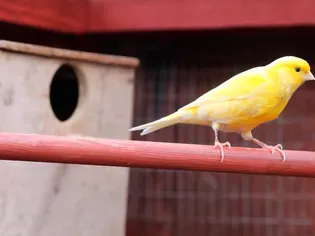Red Lory (Moluccan Lory): Bird Species Profile
Updated on 05/27/24

Unveiling the Captivating World of the Red Lory: A Detailed Species Profile
Introduction
The Red Lory, also known as the Moluccan Lory, is a vibrant and enigmatic parrot species that hails from the remote Indonesian archipelago. With its striking plumage, playful antics, and remarkable intelligence, this captivating bird has captured the hearts of avian enthusiasts worldwide. This comprehensive species profile delves into the fascinating world of the Red Lory, exploring its distinctive characteristics, behavior, diet, habitat, and conservation status.
Taxonomic Classification
* Kingdom: Animalia
* Phylum: Chordata
* Class: Aves
* Order: Psittaciformes
* Family: Psittacidae
* Genus: Eos
* Species: Eos bornea
Physical Appearance
The Red Lory is a medium-sized parrot, with an average length of 30-35 centimeters (12-14 inches). Its most striking feature is its vibrant plumage, which is predominantly scarlet red with contrasting black wingtips. The beak is curved and black, while the eyes are a piercing yellow.
Vocalizations
Red Lories are known for their distinctive and often raucous vocalizations. They have a variety of calls, including loud squawks, piercing whistles, and soft trills. These calls are used for communication, courtship, and territorial defense.
Distribution and Habitat
Red Lories are native to the Maluku Islands of Indonesia. They inhabit tropical forests and woodlands, where they are found in both lowland and highland areas. They prefer areas with tall trees that provide them with nesting sites and a source of food.
Diet
Red Lories are primarily frugivores, meaning that fruits make up the majority of their diet. They feed on a wide variety of fruits, including figs, berries, and palm fruits. They also consume nectar, pollen, and insects.
Behavior
Red Lories are social birds that live in flocks of up to 50 individuals. They are known for their playful and acrobatic behavior. They spend much of their time climbing, hanging upside down, and playing with sticks and leaves.
Reproduction
Red Lories reach sexual maturity at around 2-3 years of age. Breeding occurs during the rainy season, and they typically lay 2-3 eggs in a tree cavity. The eggs are incubated for around 26 days, and the chicks fledge from the nest about 8 weeks after hatching.
Conservation Status
The Red Lory is classified as Vulnerable by the International Union for Conservation of Nature (IUCN). Its population has declined due to habitat loss, illegal trapping, and the pet trade. Conservation efforts are underway to protect this species and its habitat.
Examples of Red Lory Behavior
* Playful Acrobatics: Red Lories are known for their playful antics. They love to climb, hang upside down, and play with sticks and leaves. They often engage in group play, chasing each other and tumbling through the air.
* Communicative Vocalizations: Red Lories have a variety of vocalizations, including loud squawks, piercing whistles, and soft trills. They use these calls to communicate with each other, defend their territory, and attract mates.
* Social Interactions: Red Lories are social birds that live in flocks of up to 50 individuals. They have strong social bonds and often groom each other, share food, and play together.
* Feeding Habits: Red Lories are primarily frugivores, but they also consume nectar, pollen, and insects. They are known for their acrobatic feeding behavior, often hanging upside down to reach fruits on high branches.
Conclusion
The Red Lory is a captivating and enigmatic parrot species that has captured the hearts of avian enthusiasts worldwide. Its vibrant plumage, playful antics, and remarkable intelligence make it a true wonder of the natural world. With its Vulnerable conservation status, it is crucial that we take active steps to protect this species and its habitat for generations to come. By raising awareness, supporting conservation efforts, and promoting responsible pet ownership, we can ensure the survival of the Red Lory and its vibrant presence in the ecosystems it calls home.
Explore More Pets

Small Bird Breeds
Gloster Canary: Bird Species Profile

Small Bird Breeds
Java Finch: Bird Species Profile

Small Bird Breeds
Zebra Finch (Chestnut-Eared Finch): Bird Species Profile

Small Bird Breeds
Alexandrine Parakeet: Species Characteristics & Care

Small Bird Breeds
Canary: Bird Species Profile

Small Bird Breeds
Lovebird (Pocket Parrot) Species Profile

Small Bird Breeds
A Guide to Pet Budgie Birds

Small Bird Breeds
Types of Small Parrots
